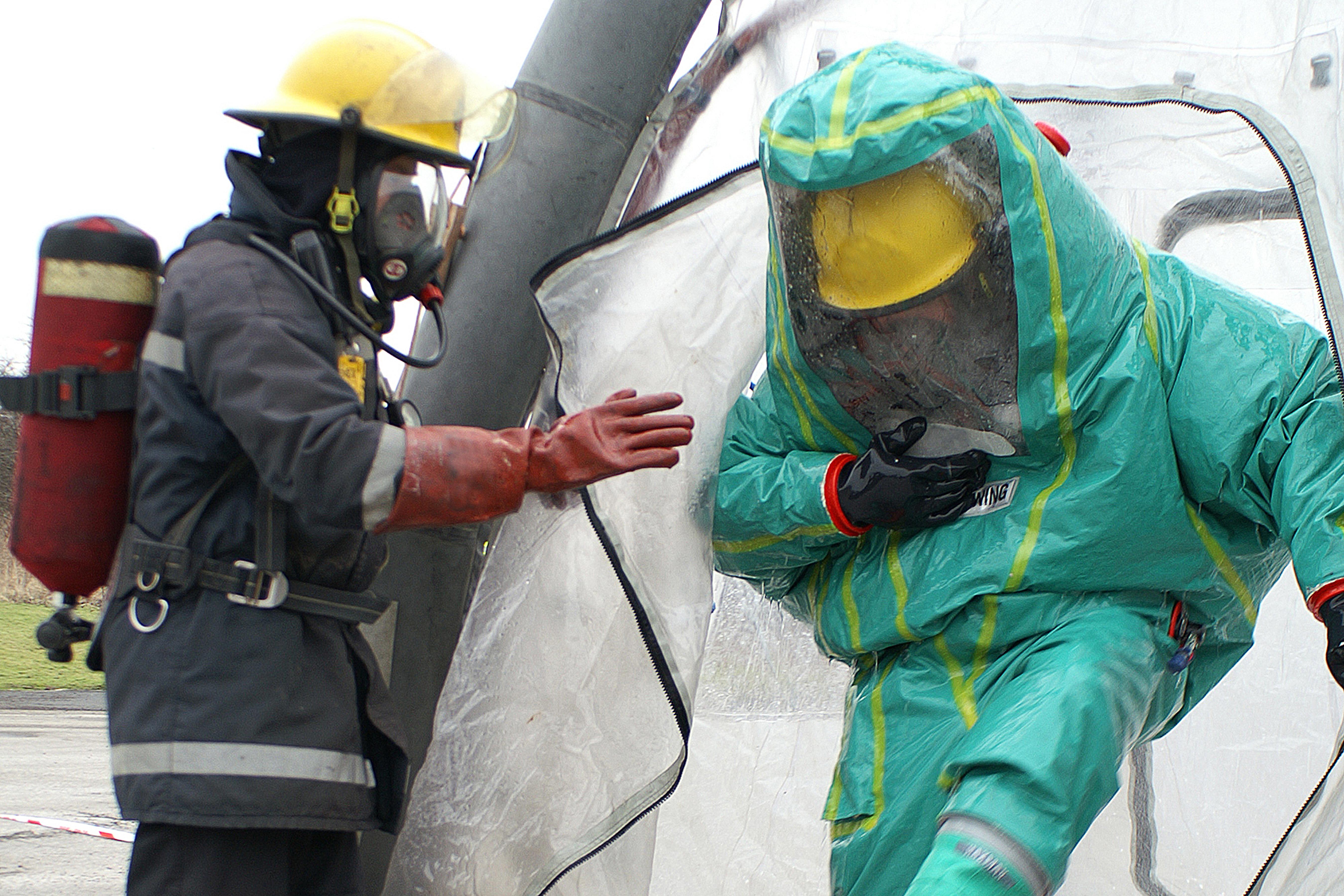It would be helpful to know how far of a drop our smartphones could endure and maintain or recover functionality, but we’d rather not test it to find out. Instead, we take precautions like using a protective case and hope for the best. We base those precautions on information such as the limitations stated by the manufacturer and our understanding of the risk.
The Department of Defense (DoD) employs systems and materiel that must function reliably in many demanding environments, including ones with threats of chemical, biological, radiological, or nuclear (CBRN) exposure; in these situations, precautions aren’t enough. CBRN survivability—the ability of personnel or systems to operate in CBRN hazard environments–is essential to ensuring America’s military advantage and deterring our adversaries’ use of weapons of mass destruction (WMDs).
Defense systems should be designed and built with the anticipation of CBRN exposures. This is why the Joint Capabilities Integration and Development System, the DoD process that sets acquisition requirements and evaluation criteria, includes CBRN survivability as part of a key performance parameter (KPP). Yet, for all but the most mission-critical systems, this KPP requirement is commonly waived. In other words, DoD is hoping for the best. As a result, field commanders lack information for decision-making and warfighters face unnecessary risk. Our approach to CBRN survivability must evolve to effectively support multi-domain operations.
Virtual Testing Supports Baseline Development
The KPP’s threshold for survivability is rooted in Cold War scenarios that, fortunately, have not come to pass. These scenarios envisioned extensive CBRN employment and effects in large-scale battlefield offensives. For materiel providers, engineering and physically testing capabilities to meet such a high threshold is costly and requires sophisticated facilities. They must choose to make this significant investment or request a waiver.
Waivers often leave us in the dark about how systems may perform in plausible scenarios where chemical, biological, and radiological agents are dispersed locally or at relatively low concentrations. We have seen this with chemical agents in Syria, where U.S. and coalition units have operated in contaminated areas. The Skripal poisonings, in which the nerve agent Novichok was used in an assassination attempt, could be deployed in similarly close contact with U.S. military personnel or installations. Yet no alternatives provide for satisfying a level of CBRN survivability more appropriate for these operational environments.
While the target, Sergei Skripal, survived, the 2018 attempt had devastating effects on the infrastructure of Salisbury, England, where the attack took place—including one bystander dead and another blinded when they encountered the dispersal device, a perfume bottle, months later. The Guardian reported the yearlong clean-up effort at 12 known contaminated sites required up to 800 military CBRN specialists for 13,000 hours. Our military infrastructure, a target for such attacks, must be hardened to mitigate the cost, complexity, and operational impact of recovery. Improved understanding of CBRN survivability would strengthen our resiliency and response to the use of these types of agents. Ensuring our systems can withstand these weapons is critical as their proliferation becomes an ever-greater threat.
We can and should develop and implement testing focused on small-concentration threat scenarios. Using advanced modeling and simulation techniques, manufacturers can conduct robust analyses of their systems against CBRN agents at varying concentrations, helping establish baseline levels of survivability. While some live testing is needed to accurately replicate WMD effects, virtual testing environments offer methods that are repeatable, low risk, and cost-effective relative to approaches that rely predominantly on physical testing. Yet, as long as full-scale survivability is the KPP standard, waivers—not testing—is incentivized. A flexible approach to CBRN survivability, starting with a sliding scale to assess how much of the KPP requirement can be met, would change that.
Informing Investments and Decisions
The KPP could be tiered with a series of testing and evaluation benchmarks for each CBRN element (e.g., discrete concentrations of chemical or biological agents or, in the case of nuclear, varying strengths of electromagnetic pulse). Perhaps a system can demonstrate survivability for low- and medium-release quantities but not a large-scale event. That’s not failure—it’s an informed limitation that, when the KPP requirement is waived presently, we don’t know about.
A sliding-scale KPP empowers acquisition officers to be judicious in seeking waivers, resulting in more testing and, ultimately, more information for commanders in the field. Commanders would better understand system performance in hazardous environments if conditions deteriorate. And they could deploy a system with confidence that there’s no additional risk to the force.
CBRN survivability is not a success-or-failure dichotomy; it’s a spectrum upon which every system and piece of equipment uniquely sits. Taking a broader perspective enables us to better recognize a system’s survivability, reduce the associated testing and evaluation costs, and be prepared for operational realities. By characterizing a system’s survivability in this fashion, DoD and industry partners can make informed investments and decisions so our forces can operate, survive, and win in CBRN hazardous environments.

Countering Weapons of Mass Destruction
LMI helps customers adopt the latest capabilities and methodologies to advance the CWMD and chemical, biological, radiological, and nuclear (CBRN) defense missions.



